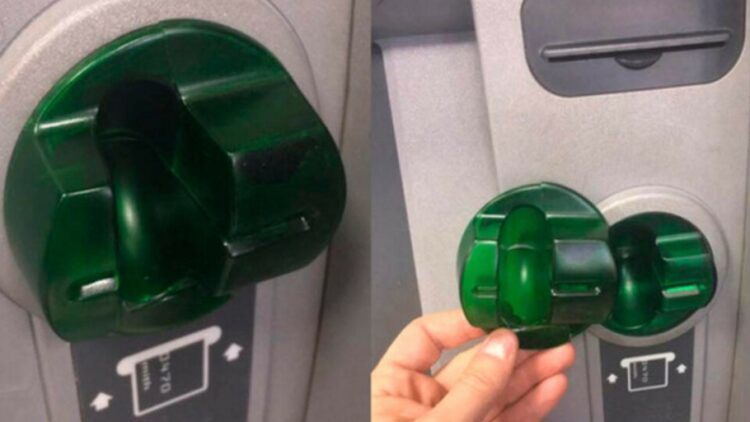World
Cybercriminals Target Card Users with Cloning Devices

Cybercriminals are increasingly using card skimming devices to clone credit and debit cards, posing significant risks to consumers. Technology expert Paula Santaolaya shared a concerning personal experience at a supermarket where she witnessed a skimmer attached to a card reader. This fraudulent device mimics legitimate point-of-sale terminals or ATMs, enabling thieves to capture sensitive information such as card numbers and personal identification numbers (PINs).
Skimmers can be discreetly installed on various payment devices, allowing criminals to access bank accounts with relative ease. Santaolaya recounted observing a customer express suspicion over a card reader that seemed faulty: “I was in line, waiting to pay, when the guy looked at the card reader and said to the cashier, ‘Hey, this seems off.’ Indeed, the reader cover was partially loose.” Such incidents underscore the importance of vigilance when using cards for transactions.
Understanding Skimming and Its Implications
A skimmer is designed to discreetly capture card information, including the card number and PIN, facilitating unauthorized access to victims’ financial accounts. Santaolaya noted that these devices can be placed not only on supermarket card readers but also on ATMs and other payment terminals, raising the stakes for consumers.
In response to the rising threat of card fraud, the Bank of Spain has issued several recommendations for consumers to help avoid falling victim to skimming. Among these are:
- Ensure no one is close by and avoid being observed while using ATMs.
- Refuse assistance from strangers during transactions.
- Check the card slot for unusual devices and tap the keypad to test for looseness.
- Cover the keypad while entering the PIN.
- If the card is not ejected, do not leave the ATM; instead, notify the bank and authorities.
- Activate SMS alerts for transactions above a certain amount.
If a consumer suspects they have been compromised by a skimmer, immediate action is crucial. Blocking the card, reporting the incident, and requesting a new card are vital steps to mitigate potential financial losses.
Emerging Threats and Preventive Measures
As card usage increases, so too do the tactics employed by cybercriminals. In addition to skimming, a method called “w-skimming” or web skimming has emerged. This online fraud technique involves hackers infiltrating e-commerce sites, altering the source code, and capturing customers’ personal and banking information as they make purchases.
In response to the evolving landscape of card fraud, the financial sector has implemented advanced security measures. One key innovation is the introduction of EMV chip cards, which create unique transaction codes that are nearly impossible for thieves to exploit. Another effective strategy is tokenization, which replaces sensitive card data with randomly generated tokens, enhancing security.
Consumers are urged to remain vigilant as the threat of cybercrime continues to evolve. Awareness of skimming and online fraud, coupled with the adoption of protective measures, can help safeguard personal and financial information in an increasingly digital world. As the prevalence of card payments grows, so does the responsibility of users to protect themselves against these sophisticated criminal tactics.
-

 Lifestyle3 months ago
Lifestyle3 months agoLibraries Challenge Rising E-Book Costs Amid Growing Demand
-

 Sports3 months ago
Sports3 months agoTyreek Hill Responds to Tua Tagovailoa’s Comments on Team Dynamics
-

 Sports3 months ago
Sports3 months agoLiverpool Secures Agreement to Sign Young Striker Will Wright
-

 Lifestyle3 months ago
Lifestyle3 months agoSave Your Split Tomatoes: Expert Tips for Gardeners
-

 Lifestyle3 months ago
Lifestyle3 months agoPrincess Beatrice’s Daughter Athena Joins Siblings at London Parade
-

 World3 months ago
World3 months agoWinter Storms Lash New South Wales with Snow, Flood Risks
-

 Science3 months ago
Science3 months agoTrump Administration Moves to Repeal Key Climate Regulation
-

 Business3 months ago
Business3 months agoSoFi Technologies Shares Slip 2% Following Insider Stock Sale
-

 Science2 months ago
Science2 months agoSan Francisco Hosts Unique Contest to Identify “Performative Males”
-

 Science3 months ago
Science3 months agoNew Tool Reveals Link Between Horse Coat Condition and Parasites
-

 Sports3 months ago
Sports3 months agoElon Musk Sculpture Travels From Utah to Yosemite National Park
-

 Science3 months ago
Science3 months agoNew Study Confirms Humans Transported Stonehenge Bluestones









